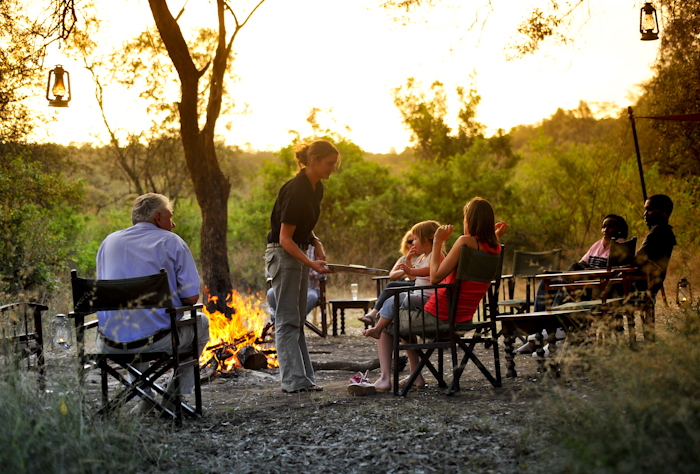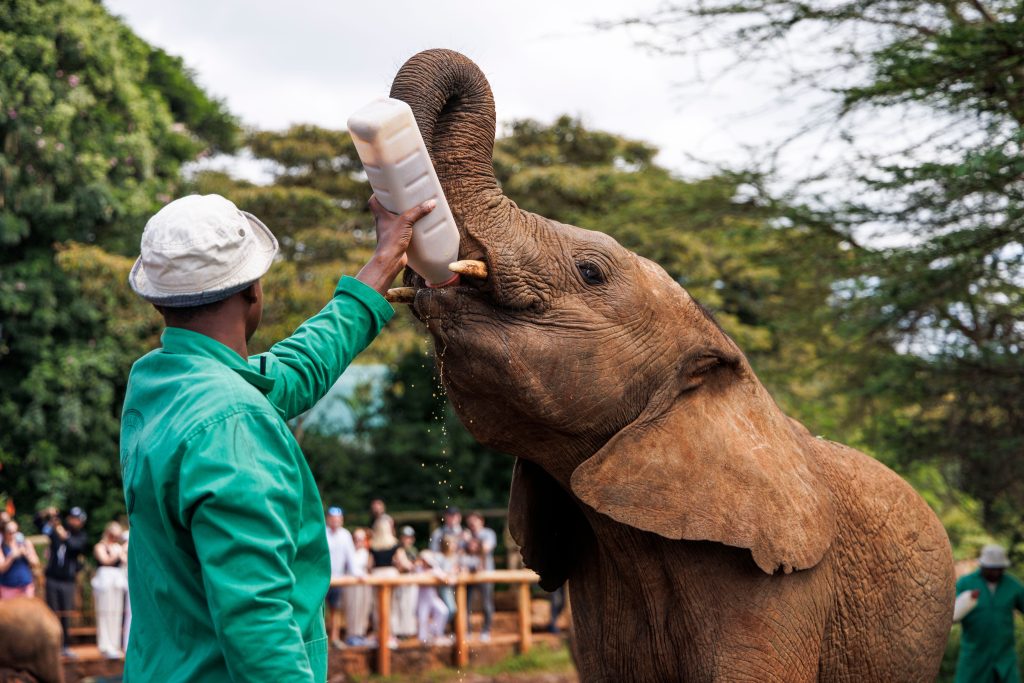
Nowhere else in the world can you watch wild lions prowl against a backdrop of city skyscrapers. Nairobi National Park is one of Africa’s most unique safari destinations—not because of its size or remoteness, but because of its location. Just a short drive from the centre of Kenya’s capital, this park offers a striking juxtaposition of wilderness and urban life. It’s a sanctuary for endangered species, a haven for birdlife, and a vital green lung for one of Africa’s busiest cities. Whether you’re on a layover, a weekend visit, or the start of a longer safari, Nairobi National Park delivers unforgettable encounters just minutes from the airport.
Quick Facts About Nairobi National Park
- Location: Just 7 kilometres south of Nairobi’s central business district
- Size: 117 square kilometres (Kenya’s smallest national park)
- Established: 1946, making it Kenya’s first national park
- Highlight: Only park in the world with free-roaming big game and a city skyline in the background
- Famous For: Black rhinos, lions, and the successful reintroduction of endangered species
- Accessibility: Easily reached by taxi or car from anywhere in Nairobi, including Jomo Kenyatta International Airport
History of Nairobi National Park
Nairobi National Park was officially gazetted in 1946, the first of its kind in Kenya and one of the earliest urban-adjacent conservation efforts in the world. During colonial times, it was set aside to protect wildlife migrating through the Athi-Kapiti Plains, but urban expansion quickly surrounded it.
Over the years, it has become a symbol of coexistence—between wild animals and city dwellers, development and conservation. It also plays a vital role in Kenya’s conservation history, particularly in the breeding and protection of the critically endangered black rhino.
Despite its proximity to urban Nairobi, the park maintains a fully functioning ecosystem, with open plains, riverine forests, and wetland areas that support a rich variety of flora and fauna. It is also home to the headquarters of the Kenya Wildlife Service (KWS), which manages national parks across the country.
How to Get There
By Road:
The park lies just 15 to 30 minutes from most parts of Nairobi, depending on traffic. Entry is via the Lang’ata Gate, which is accessible by private vehicle or taxi. There is also the East Gate and Maasai Gate for access from other parts of the city.
By Air:
Jomo Kenyatta International Airport is just a 20-minute drive away, making the park ideal for layover safaris. Some tour operators offer half-day packages for transiting passengers, complete with pick-up and drop-off.
Self-Drive or Guided Tour:
You can either self-drive with a 4×4 vehicle or book a guided game drive through a local operator. Morning and late afternoon are the best times for wildlife sightings, and professional guides can help maximise your chances of spotting key species.
Lodges and Accommodation Within or Near the Park
While Nairobi National Park is primarily a day-visit destination, there are several accommodations either within or bordering the park that offer immersive overnight experiences.
Inside or Bordering the Park:
- The Emakoko – A luxurious lodge set on the park’s southern boundary, offering views over the wildlife corridor. It blends exclusivity with accessibility, just a short drive from both Wilson and Jomo Kenyatta airports.
- Nairobi Tented Camp – The only accommodation within the park’s boundaries, this eco-friendly tented camp offers a true bush experience without leaving the city. Perfect for early morning game drives and night stays under canvas.
- Ololo Safari Lodge – Located on the southern boundary of the park, Ololo is a boutique farmhouse-style lodge offering homegrown food, guided drives, and stylish decor.
Within Nairobi but Close to the Park:
- Giraffe Manor and Karen Blixen Coffee Garden – Located in the Karen suburb, these luxury properties offer boutique experiences and easy access to the park and nearby attractions like the Giraffe Centre and Sheldrick Wildlife Trust.
- Tamarind Tree Hotel and Eka Hotel – Business-style hotels offering comfort and convenience, ideal for travellers who want to combine city and safari stays.

Activities to Do in Nairobi National Park
Game Drives
The most popular activity is a traditional safari game drive, with high chances of spotting black and white rhino, lions, buffalo, giraffes, zebras, and numerous antelope species. Morning and evening drives offer the best wildlife activity and photography lighting.
Visit the Ivory Burning Site Monument
A symbolic site within the park where President Moi famously burned confiscated ivory in 1989. It remains a powerful reminder of Kenya’s stance on anti-poaching and the ongoing fight against wildlife trafficking.
Sheldrick Wildlife Trust (Elephant Orphanage)
Located just outside the park gate, this world-renowned sanctuary cares for orphaned baby elephants and rhinos. Visitors can attend the daily public feeding hour or adopt an elephant to receive exclusive visiting privileges.
Walking Trails at the Nairobi Safari Walk
This raised wooden boardwalk near the main gate offers a unique way to learn about Kenya’s ecosystems and spot animals up close in a semi-wild setting. It’s especially good for families and school groups.
Bird Watching
The park hosts over 500 bird species, including migratory storks, herons, eagles, and endangered species like the secretary bird and martial eagle. The varied habitats offer excellent birding opportunities throughout the year.
Wildlife You’re Likely to See
Despite its small size, Nairobi National Park boasts an impressive range of wildlife. The absence of elephants (due to the park’s fencing on three sides) is offset by healthy populations of other species:
- Black rhino – The park is one of the few strongholds for this endangered species.
- Lions – Often seen hunting in the early morning; they are surprisingly well adapted to city-edge life.
- Leopards and cheetahs – Elusive but occasionally spotted, especially in quieter areas of the park.
- Buffalo, giraffe, zebra, and eland – All commonly seen grazing in the plains.
- Hippopotamus and crocodiles – Found in the Athi River section and wetland pools.
- Birdlife – From waterbirds and grassland species to raptors and woodland dwellers.
The contrast of wildlife with city infrastructure in the background offers a fascinating and at times surreal photographic opportunity.
Conservation and Community Projects
Kenya Wildlife Service (KWS)
With its headquarters based at the park, KWS manages anti-poaching efforts, rhino protection, and community education programmes. Their work is vital to ensuring the park remains a viable habitat despite urban pressure.
Sheldrick Wildlife Trust
Operating alongside the park, the trust is instrumental in rescuing orphaned elephants and reintegrating them into the wild. Their work in veterinary support, community outreach, and wildlife corridors complements the park’s conservation goals. sheldrickwildlifetrust.org
Friends of Nairobi National Park (FoNNaP)
This community-based organisation advocates for the park’s protection and sustainable coexistence with Nairobi’s growing population. They run clean-up campaigns, reforestation efforts, and public awareness drives. fonnap.org
The park also faces ongoing challenges, including encroachment, infrastructure development (notably the Standard Gauge Railway), and balancing tourism with urban expansion.

Films, Documentaries and Books Featuring Nairobi National Park
Documentaries:
- The Urban Elephant – Part of PBS’s Nature series, features stories from the Sheldrick Wildlife Trust near the park.
- National Geographic Specials – Nairobi National Park regularly features in Nat Geo programming on urban wildlife and conservation challenges.
- Africa’s Super Seven – Though not exclusively about Nairobi, some episodes capture the park’s unusual wildlife dynamics near the city.
Books:
- Love, Life and Elephants by Daphne Sheldrick – A moving autobiography that chronicles the life of Dame Daphne Sheldrick and the development of the elephant orphanage.
Why Visit Nairobi National Park?
Nairobi National Park offers a safari like no other—raw nature framed by a modern city skyline. It’s ideal for:
- Travellers with limited time who want a true safari experience within a city
- Layover visitors with a few hours to spare between flights
- Wildlife lovers interested in conservation work
- Families and school groups
- Researchers and photographers seeking urban-wildlife interactions
Despite development pressures, the park remains a living testament to Kenya’s deep commitment to wildlife protection—and a powerful example of how modern cities and ancient ecosystems can still, with care, co-exist. Visiting the park helps to support these efforts and keep it safe for the wildlife and also for Nairobi’s residents to enjoy the wonderful wildlife their country offers.
Learn more about visiting Kenya


